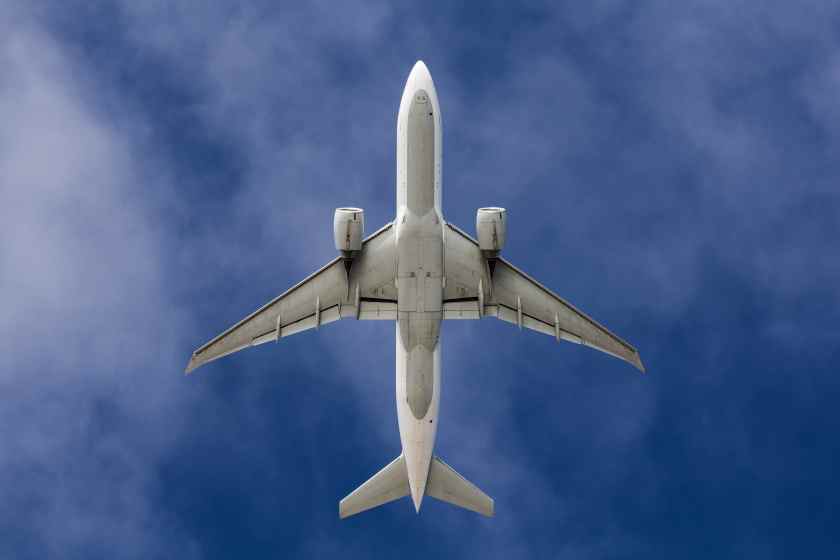AirAsia Secures Over Twelve Billion dollars Deal with Airbus for Seventy A321XLR Aircraft, Strengthening Its Fleet and Expanding Asia and Europe Networks for Future Growth - Travel And Tour World
Saturday, July 5, 2025

AirAsia has signed a landmark deal valued at over twelve billion dollars with Airbus for the purchase of seventy A321XLR aircraft. This significant investment strengthens the airline’s fleet, enabling it to enhance its operations and expand its route network across Asia and Europe. The addition of the fuel-efficient A321XLR jets aligns with AirAsia’s long-term strategy to improve operational efficiency, increase connectivity, and support its growth in both regional and international markets. With these new aircraft, AirAsia is well-positioned to meet the growing demand for air travel while maintaining its low-cost service model, paving the way for sustained expansion and future growth.
AirAsia has officially secured a transformative agreement with Airbus, committing to purchase up to 70 A321XLR aircraft for a total value of $12.3 billion. This deal, finalized during the Malaysian Prime Minister’s official visit to France, marks a significant step in the airline’s growth strategy. The order includes 50 confirmed aircraft, with the option for an additional 20, and deliveries are expected to begin in 2028.
The acquisition of the A321XLR, known for its extended range and fuel efficiency, positions AirAsia to expand its network by tapping into new international markets. The deal further strengthens AirAsia’s fleet while maintaining its reputation for low-cost, high-efficiency service across the regions it serves.
The A321XLR is the longest-range variant of the A321neo family, offering AirAsia the capability to reach destinations previously inaccessible with its existing fleet of narrowbody jets. This acquisition will allow the airline to serve high-demand markets in Asia and Europe without the need for widebody aircraft. With its impressive fuel efficiency and extended range, the A321XLR will help AirAsia operate long-haul routes with reduced operational costs, making it an ideal choice for the airline’s ambitious expansion goals.
AirAsia’s decision to focus on narrowbody aircraft reflects its broader strategy to streamline operations and optimize fuel consumption. The airline’s shift toward an all-narrowbody fleet is aimed at enhancing profitability while reducing its carbon footprint. This strategic move ensures that AirAsia can continue to offer competitive ticket prices while maintaining efficiency and sustainability.
With the A321XLR, AirAsia plans to enhance its network by targeting underserved markets in both Asia and Europe. The expanded range of these aircraft opens new opportunities for the airline to operate more direct, cost-effective services between these regions. AirAsia’s ability to offer new routes without the need for larger, more expensive aircraft represents a significant advantage in terms of both operational costs and route flexibility.
The airline is also considering cancelling its previous order for A330 widebody jets in favor of the A321XLR, a move that would further optimize its fleet for the long-term. This transition to an all-narrowbody fleet is expected to reduce the airline’s maintenance costs and enhance overall operational efficiency, aligning with AirAsia’s commitment to sustainable growth.
The Airbus agreement comes at a time when Malaysia is working to strengthen its diplomatic and economic ties with France. The deal was signed as part of the Malaysian Prime Minister’s official visit to Paris, which underscored the growing collaboration between the two countries in various sectors, including trade and defense. In addition to the aircraft order, Malaysia signed defense contracts with France for maritime patrol aircraft and AW149 helicopters, signaling a deepening of defense and commercial cooperation between the two nations.
Aviation agreements have increasingly become a key element of diplomatic visits, with high-value aircraft purchases often serving as symbols of strengthened bilateral relations. Similar agreements, such as Boeing’s massive deal with Qatar Airways during U.S. diplomatic visits, have demonstrated how aviation can act as a catalyst for enhancing international ties. In this case, the AirAsia-Airbus deal signifies a deepening relationship between Malaysia and France, offering tangible benefits to both nations.
The Airbus order further underscores the strong economic partnership between Malaysia and France. France has long been one of Malaysia’s key trading partners within the European Union, and the Prime Minister’s visit is a reflection of Malaysia’s efforts to attract more foreign direct investment (FDI) in strategic sectors such as digital technology, renewable energy, and advanced manufacturing.
During the visit, the Prime Minister engaged with French business leaders to promote Malaysia as an attractive destination for investment. The roundtable discussions aimed to highlight Malaysia’s strengths in technology, clean energy, and infrastructure, positioning the country as a competitive hub for global investors. The Prime Minister also delivered a lecture at Sorbonne University, promoting educational and cultural exchange between the two countries.
AirAsia’s A321XLR purchase is a vital component of its long-term growth strategy, which includes fleet expansion, operational efficiency, and market diversification. In addition to this deal, the airline plans to add up to 150 more aircraft over the next several years, further enhancing its global reach and flexibility. This aggressive fleet expansion reflects AirAsia’s commitment to capitalizing on the growing demand for travel, particularly in the post-pandemic era.
With the ability to operate longer and more cost-efficient routes, AirAsia is well-positioned to serve the growing market for intra-Asia and mid-haul travel. The A321XLR’s extended range will enable the airline to tap into new opportunities that were previously unviable, ensuring that it remains competitive in a rapidly evolving aviation landscape.
The growing trend of aligning commercial aircraft purchases with diplomatic agendas highlights the increasing role aviation plays in global relations. The AirAsia-Airbus deal is part of a larger shift where high-value aviation agreements are seen not just as business decisions, but as key components of strengthening diplomatic and economic ties between countries.
In this case, AirAsia’s decision to invest in the A321XLR serves both its commercial goals and broader diplomatic efforts, promoting long-term partnerships and encouraging foreign investment. This deal showcases how aviation can be a powerful tool for advancing international cooperation while fostering the economic growth of participating nations.
AirAsia’s commitment to purchasing the A321XLR aircraft is a strategic move that will strengthen its position in the competitive global aviation market. The acquisition of these fuel-efficient jets will enable the airline to expand its operations, enhance its route network, and ensure sustainability while maintaining low-cost service. The deal not only represents a significant investment in AirAsia’s future but also highlights the growing intersection between aviation, diplomacy, and global economic growth. As AirAsia continues to evolve and expand, it is poised to lead the way in a more sustainable, efficient, and profitable era for the aviation industry.
«Enjoyed this post? Never miss out on future posts by following us»







